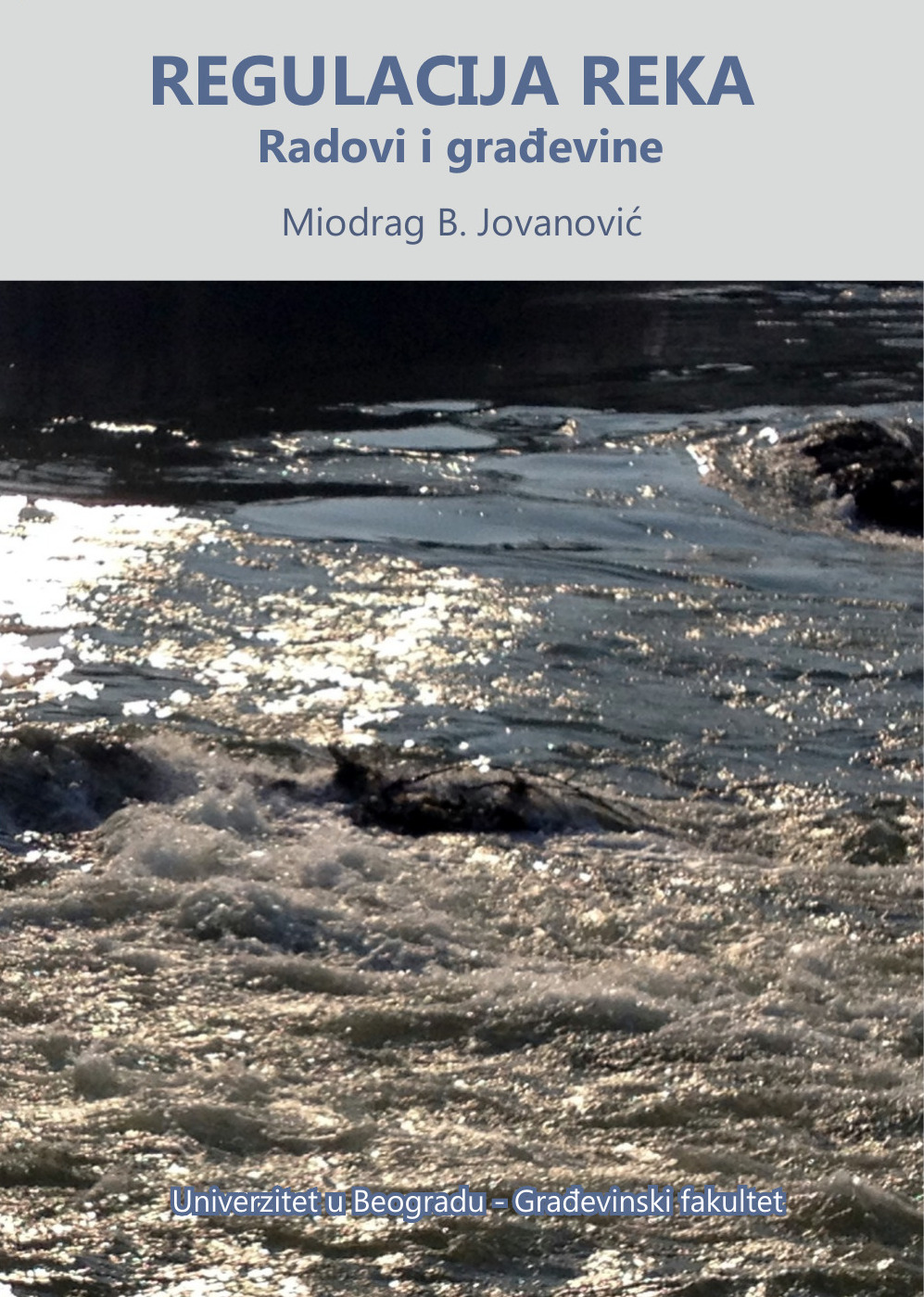Book
River training works and structures
M. Jovanović

M. Jovanović
RIVER ENGINEERING
Works and structures
(in Serbian)
Faculty of Civil Engineering
Belgrade, 2022.
ISBN 978-86-7518-215-3
Pages: 536
About the book:
"...Students who have mastered funda-mental construction and hydrotech-nical subjects, this book will serve as an introduction to practical aspects and higher levels of application of stati-stical, hydrological, hydraulic, geo-technical, constructive, ecological and other concepts and methods in river training and flood protection. It will also serve as a reminder to designing en-gineers of previously acquired know-ledge and as a reference book in which answers can be found to many if not almost all, relevant issues in river engi-neering. Both of them, as well as those who have the ambition to engage in scientific research work, will find valu-able the collection of examples of analysis and design of various types of river structures."
Prof. Slobodan Djordjevic
Contents:
1 RIVER TRAINING AS A PART OF HYDRAULIC ENGINEERING
1.1 Motives for river training
1.2 Integral approach in river training
1.3 Uncertainties and decision making
1.4 Planning of river training works
1.5 Challenges and future developments
2 RIVER TRAINING DESIGN
2.1 Introductory considerations
2.2 Design input data
2.3 Design elements
2.4 River channel stability checkup
2.5 Three-level design approach
2.6 Design documentation
3 RIVER TRAINING STRUCTURES
3.1 Introductory considerations
3.2 Materials in river training
3.3 Revetments
3.4 Retards
3.5 Groynes
3..6 Barriers
3.7 Drop structures - cascades
3.8 Sills
3.9 Special structures - vanes
3.10 Levees
4 RIVER TRAINING WORKS
4.1 Introductory considerations
4.2 Building and maintenance of structures
4.3 Biotechnical works
4.4 Artificial cutoffs
4.5 River closure and diversion
4.6 Confluence engineering
4.7 Protection of traffic infrastructure
4.8 Dredging
5 NATURAL RIVER TRAINING
5.1 River ecosystems
5.2 Design and technical solutions
5.3 Ecologic importance of floodplains
6 FLOOD PROTECTION
6.1 Introductory considerations
6.2 Hydrologic uncertainty of floods
6.3 Typology of floods
6.5 Nonstructural flood protection measures
7 RIVER ENGINEERING IN SERBIA
7.1 Overview of the accomplished river training works
7.2 Important hydraulic engineering systems
Literature
Appendices
D1 - Standard sieve openings
D2 - Properties of the incoherent soils
D3 - Properties of the coherent soils
D4 - Filtration coefficient values
D5 - Floodplains roughness coefficient values
D6 - Gabion characteristics
D7 - Properties of geosynthetics
D8 - Measurement uncertainties
D9 - Error estimation in suspended sediment measurement
D10 - Coordinate system transformation
D11 - List of numerical examples
Subject index